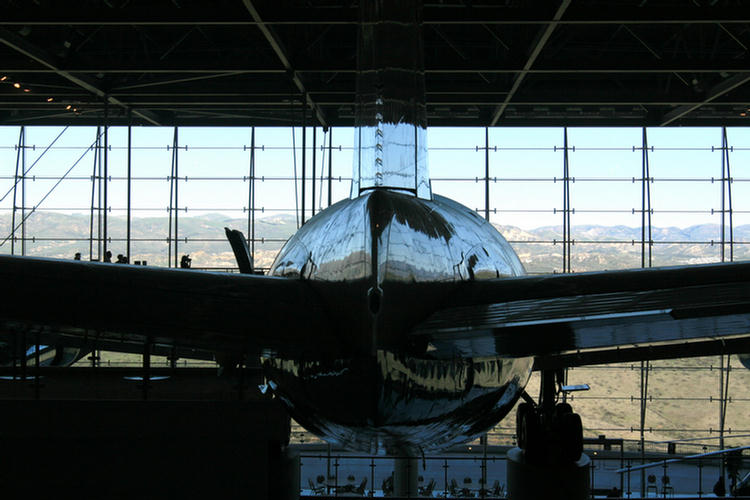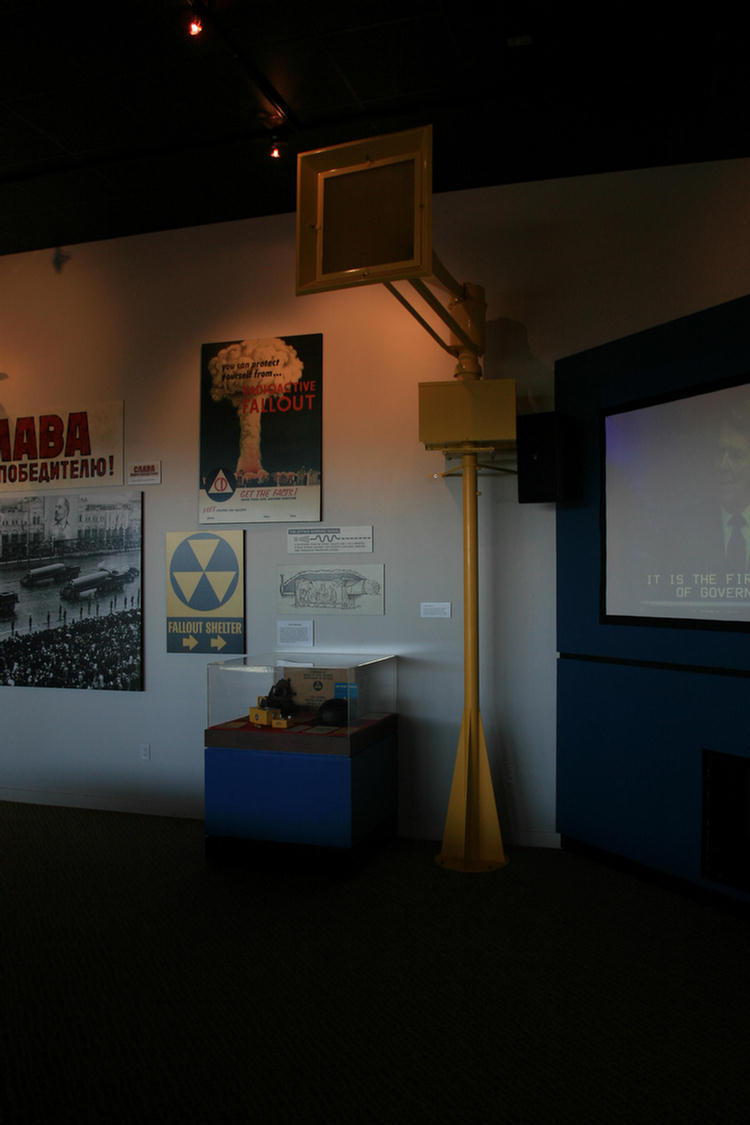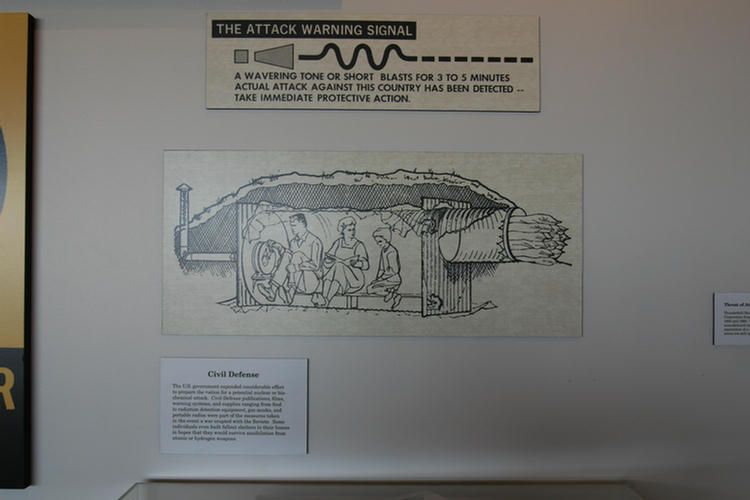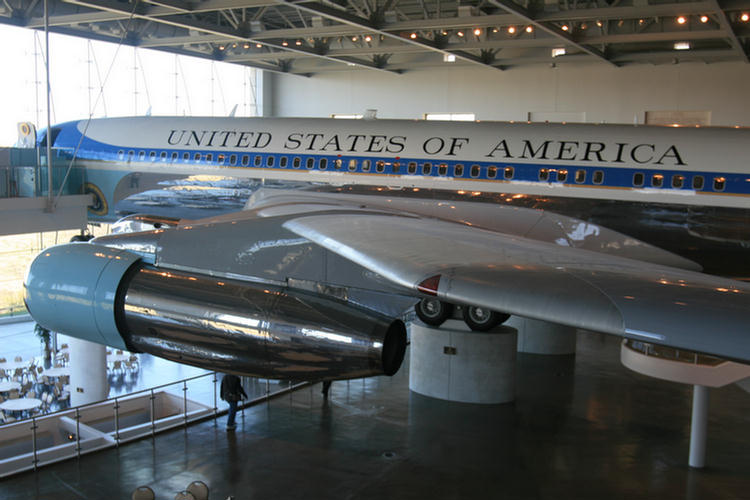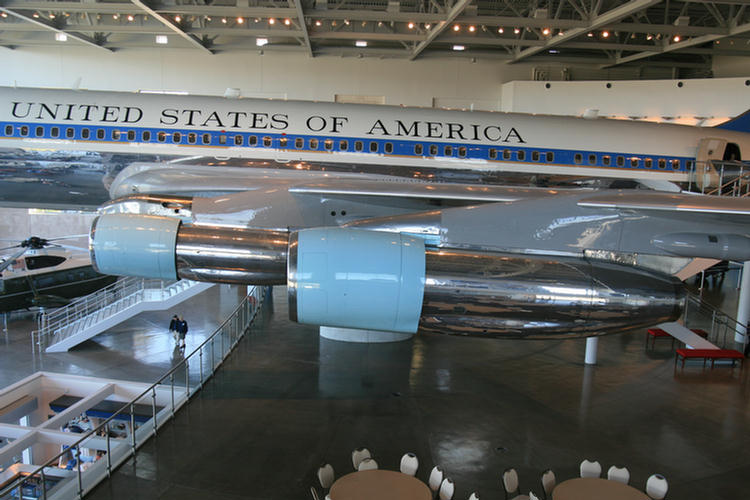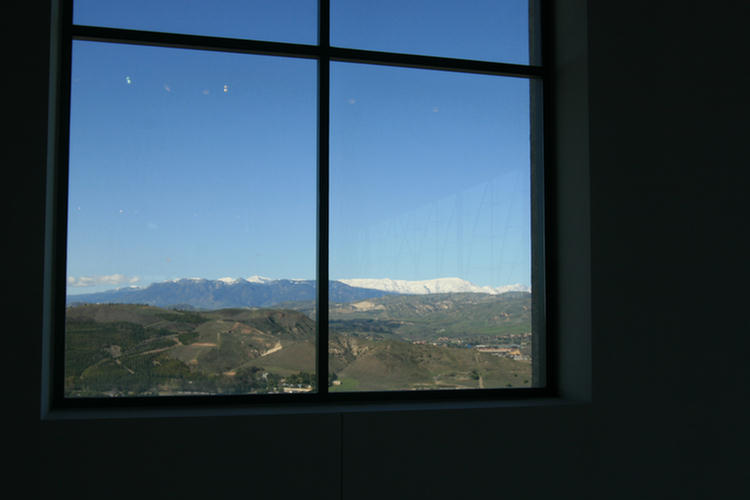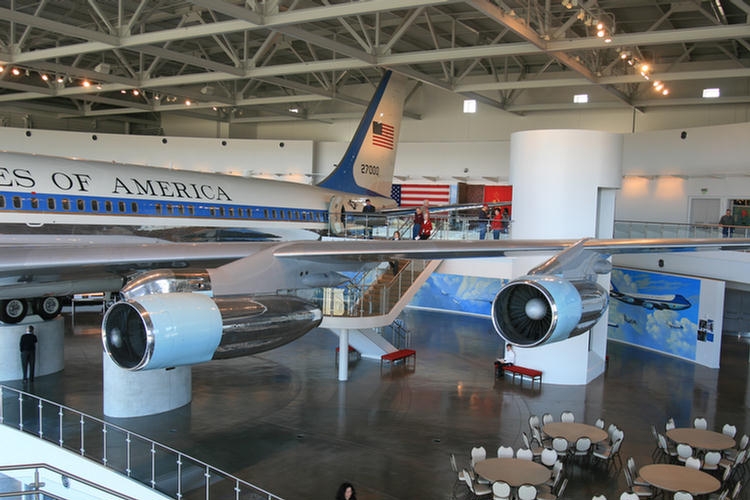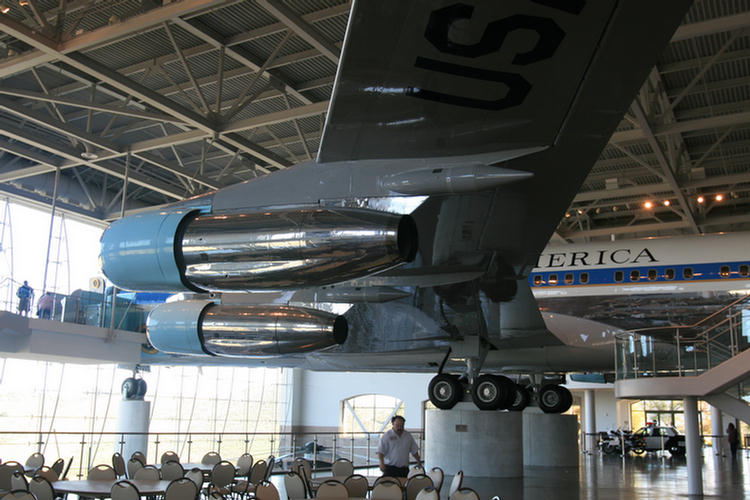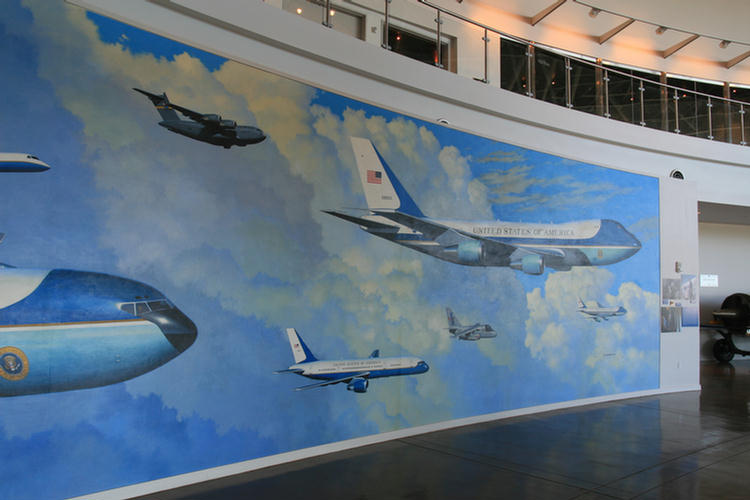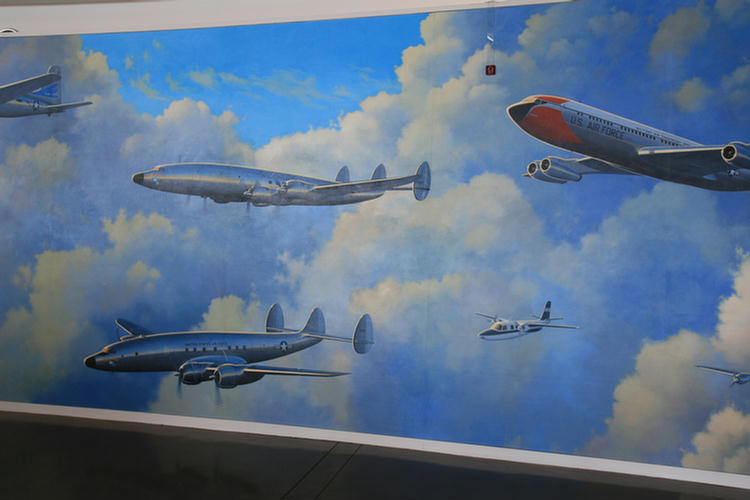Museums
Great places to allow your mind to expand
The Ronald Reagan Library
Ronald Reagen Library Page Two | Tear Down This Wall
Did you know? - The Ronald Reagan Presidential Library and Center for Public Affairs is the presidential library and final resting place of Ronald Wilson Reagan, the 40th President of the United States. Designed by Hugh Stubbins and Associates, the library is located in Simi Valley, California, about 40 miles (64 km) northwest of Downtown Los Angeles and 15 miles (24 km) west of Chatsworth. The library may be accessed by driving to the Olsen Road exit of State Route 23, which connects to the nearby Ronald Reagan Freeway, State Route 118.
The Reagan Library is the largest of the twelve federally funded presidential libraries. The street address, 40 Presidential Drive, is numbered in honor of Reagan's place as the 40th President.

A beautiful location
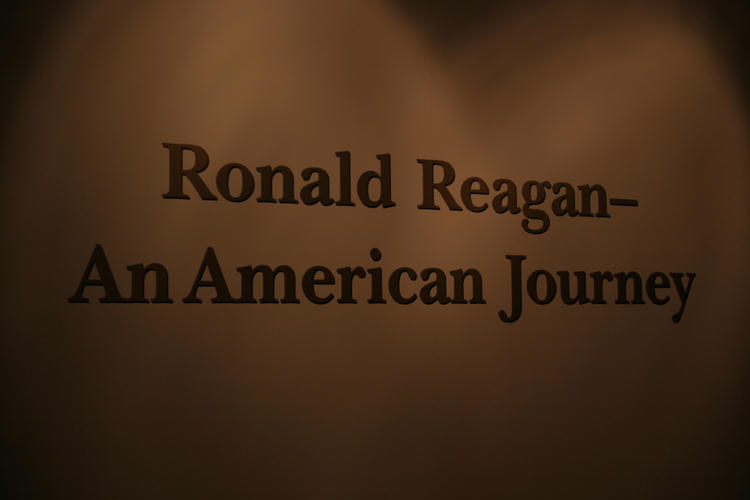
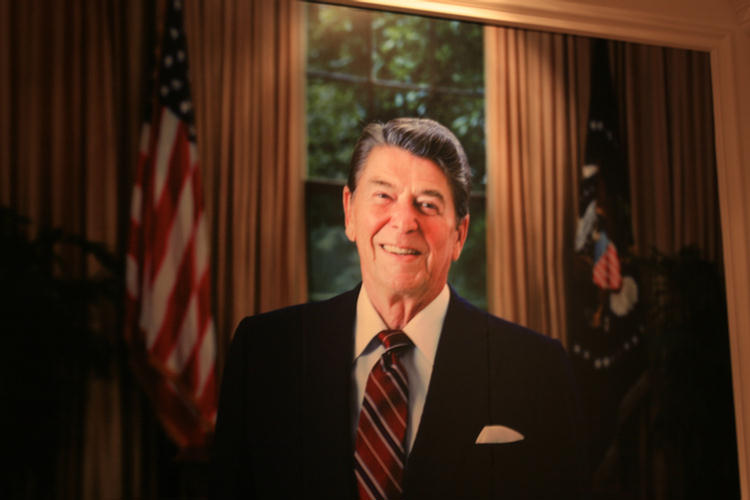
Our greatest President
On To The Displays

The kitchen where he grew up
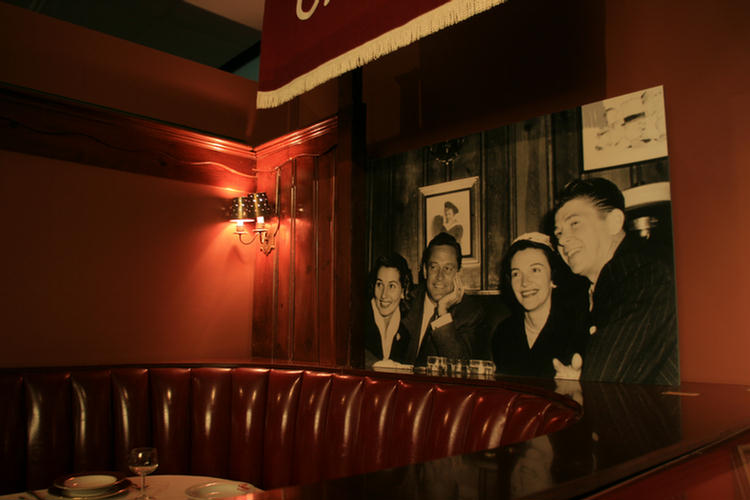
Chasens's had a special booth for Mr Reagan
Did you know? - Chasen's was a restaurant in Beverly Hills, California that was a hangout for entertainment luminaries. Located at 9039 Beverly Boulevard in Beverly Hills, it was the site of the Academy Awards party for many years and was also known for its chili. In 1962 Liz Taylor had several orders of Chasen’s chili flown to the set of Cleopatra while filming in Rome. Many of its regular customers had booths named in their honor. The Ronald Reagan booth, now on display at the Ronald Reagan Presidential Library museum, was where Reagan proposed to Nancy Reagan (neė Davis). Other well known people that had a booth were Frank Sinatra, Alfred Hitchcock, James Stewart and Groucho Marx.
The restaurant was opened in December, 1936. by vaudevillian Dave Chasen at the advice of his friend, director Frank Capra and was called "Chasen's Southern Pit". New Yorker Editor Harold Ross along with a business associate Daniel Silberberg grubstaked the operation. It was nothing more than a shack, but quickly became well known for its chili and was soon a favorite among Hollywood actors at the time. At first, Capra had to loan Chasen his silverware for the restaurant's operation. Marilyn Monroe, Shirley Temple, Cary Grant, Jack Benny, Jackie Gleason, W.C. Fields, James Cagney, Clark Gable, and F. Scott Fitzgerald were customers. Read more!
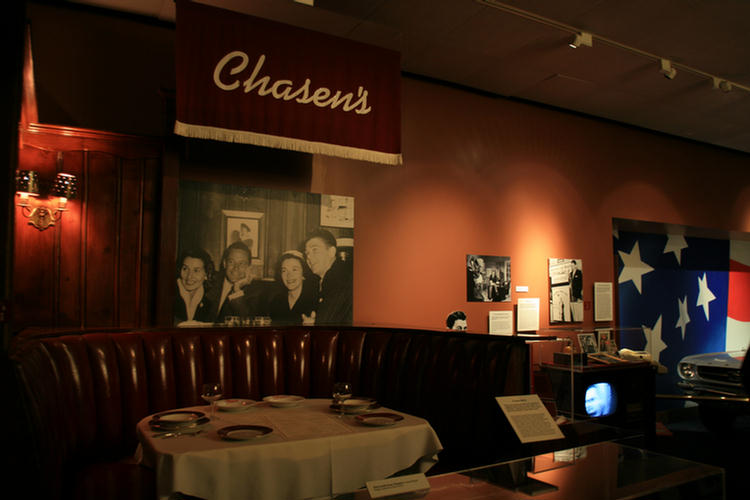
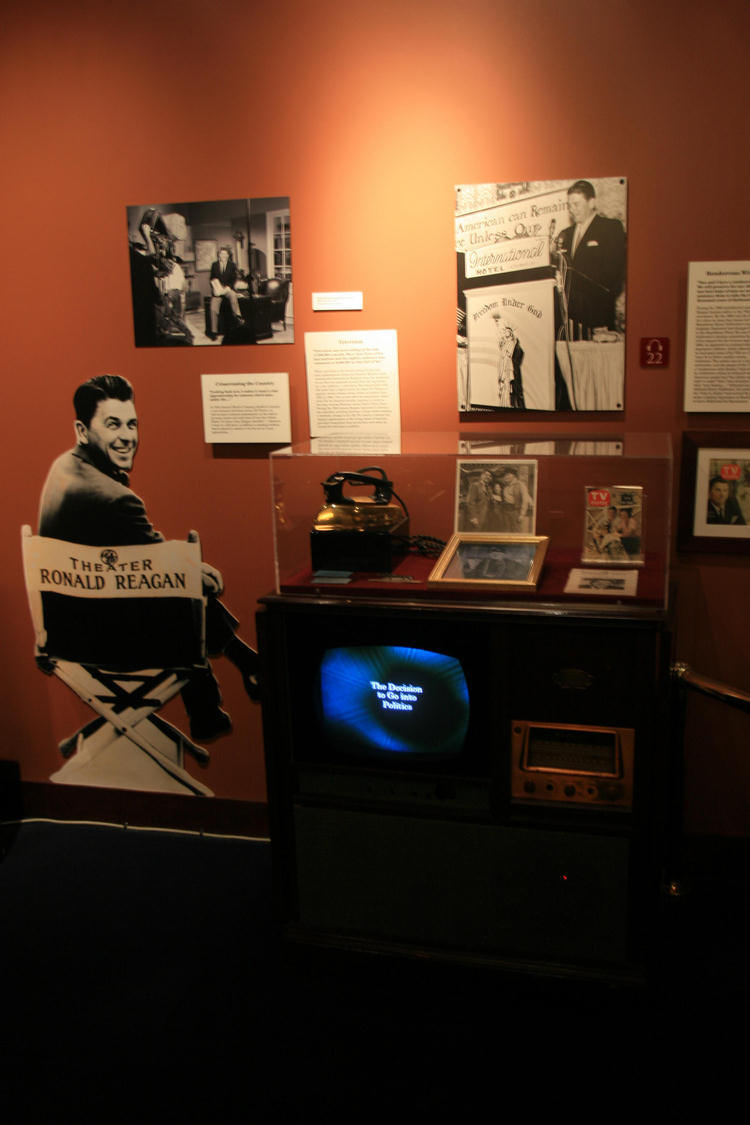

Mr. Reagan used this car to campaign for Governor of
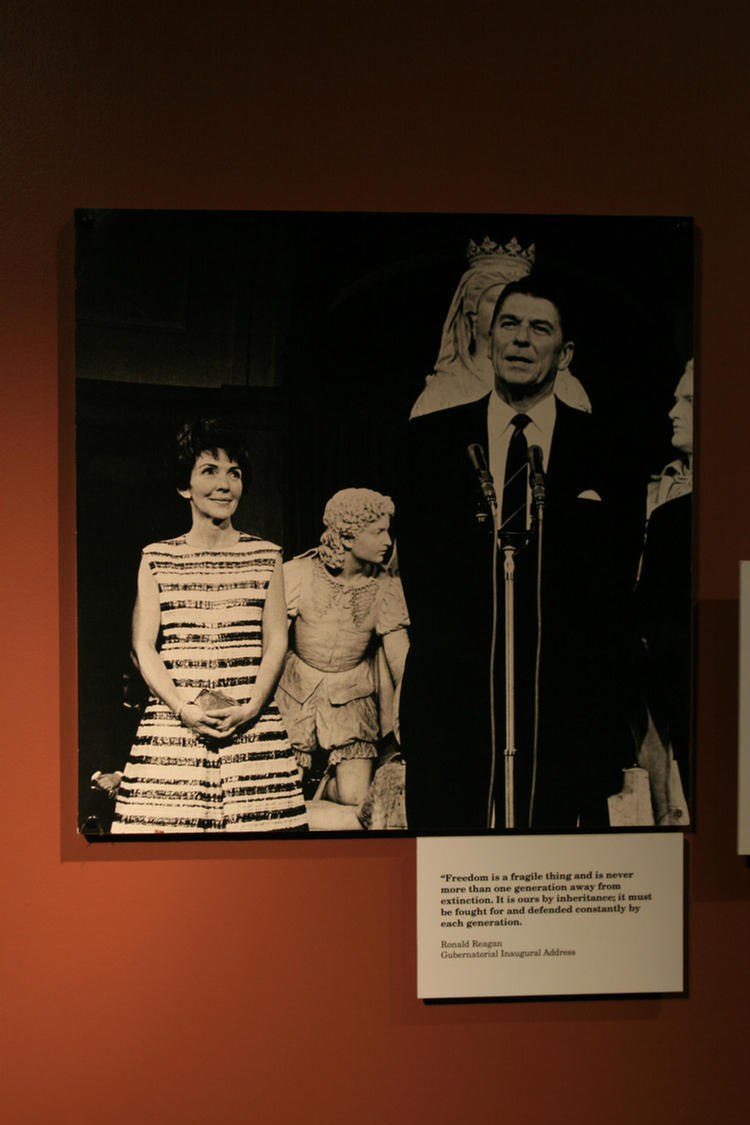

If he could only see it now!
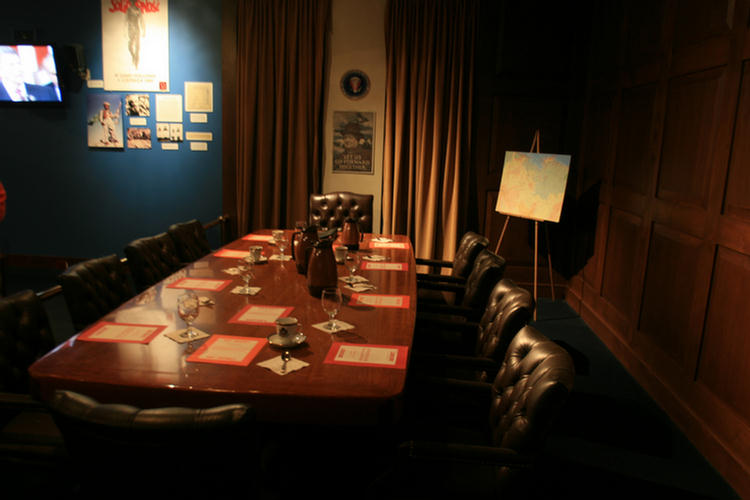
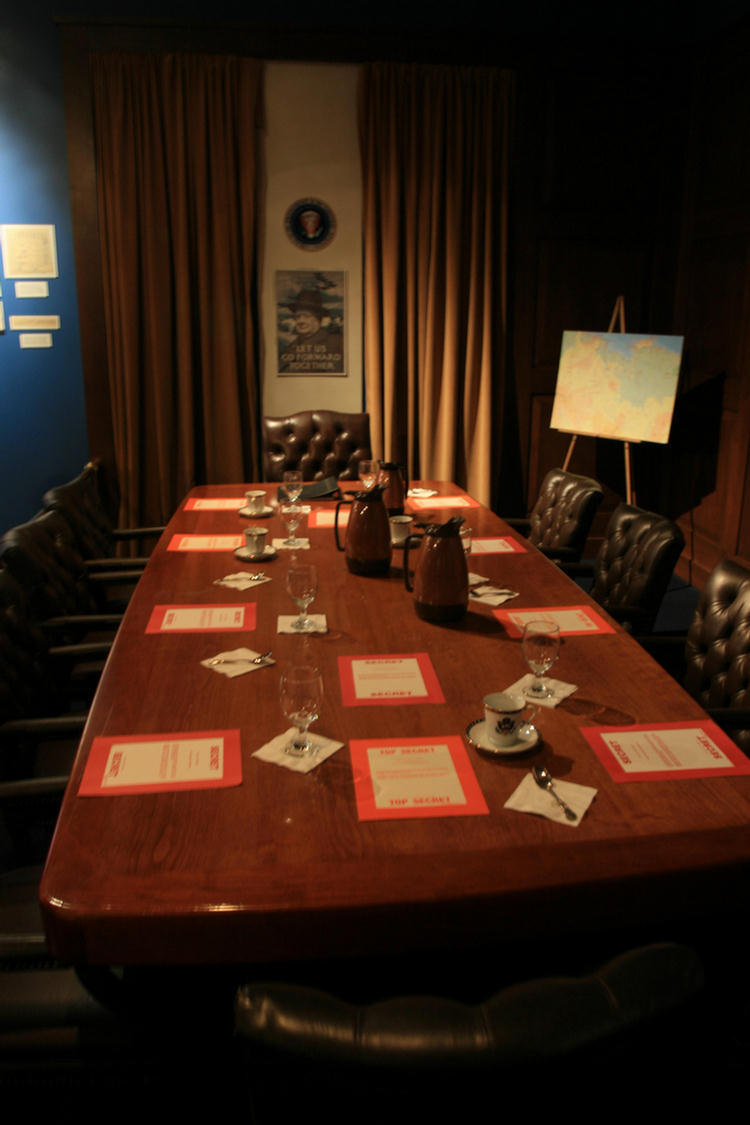




Visiting The Boeing 707

Did you know? - On October 11, 1910, Theodore Roosevelt became the first U.S. president to fly in an aircraft, although at the time of the flight in an early Wright Flyer from Kinloch Field (near St. Louis, Missouri), he was no longer in office, having been succeeded by William Howard Taft. The record-making occasion was a brief overflight of the crowd at a country fair but was nonetheless, the beginning of presidential air travel.
Prior to World War II, overseas and cross-country presidential travel was rare. Lack of wireless telecommunication and quick transportation made long-distance travel impractical, as it took much time and isolated the president from events in Washington, D.C. By the late 1930s, with the arrival of aircraft such as the Douglas DC-3, increasing numbers of the U.S. public saw passenger air travel as a reasonable mode of transportation. All-metal aircraft, more reliable engines, and new radio aids to navigation had made commercial airline travel safer and more convenient. Life insurance companies even began to offer airline pilots insurance policies, albeit at extravagant rates, and many commercial travelers and government officials began using the airlines in preference to rail travel, especially for longer trips.
Franklin D. Roosevelt was the first president to fly in an aircraft while in office. During World War II, Roosevelt traveled on the Dixie Clipper, a Pan Am-crewed Boeing 314 flying boat to the 1943 Casablanca Conference, in Morocco, a flight that covered 5,500 miles (in three "legs"). The threat from the German submarines throughout the Battle of the Atlantic made transatlantic air travel the preferred method of transportation
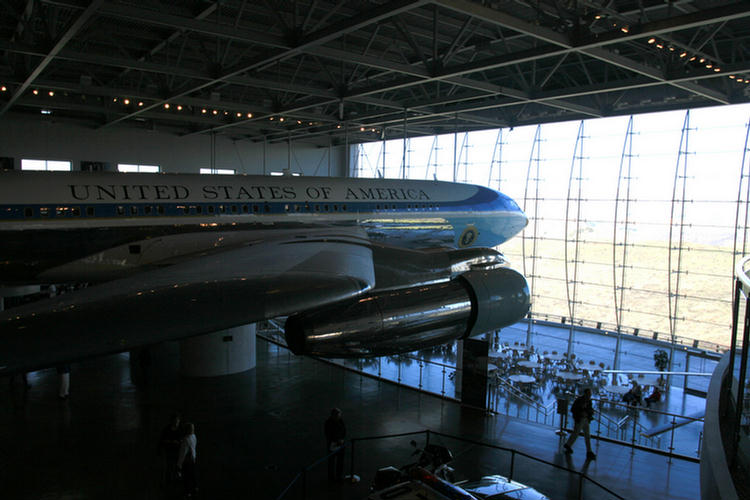
Did you know? - SAM 27000 was decommissioned in 2001 by President George W. Bush, flown to San Bernardino International Airport in California, and later dismantled and taken to the Ronald Reagan Presidential Library in Simi Valley, where it was reassembled and is currently on permanent display.
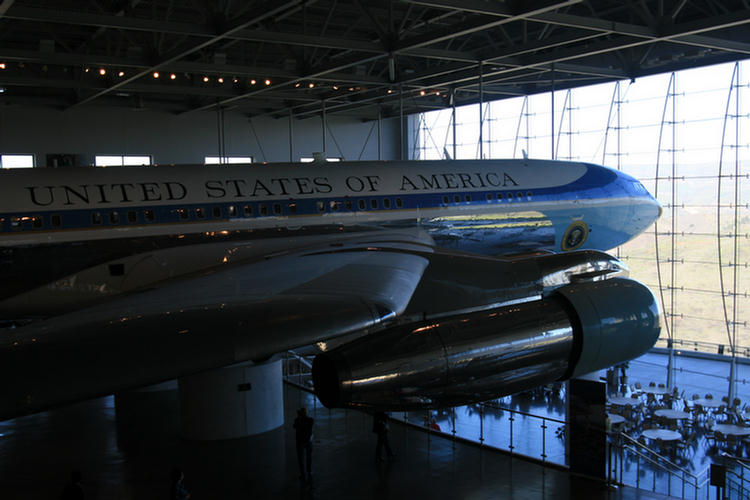
Did you know? - President Franklin D. Roosevelt's C-54 Skymaster aircraft, nicknamed "the Sacred Cow".
Concerned about relying upon commercial airlines to transport the president, USAAF leaders ordered the conversion of a military aircraft to accommodate the special needs of the Commander in Chief. The first dedicated aircraft proposed for presidential use was a C-87A VIP transport aircraft. This aircraft, number 41-24159, was re-modified in 1943 for use as a presidential VIP transport, the Guess Where II, intended to carry President Franklin D. Roosevelt on international trips.[9] Had it been accepted, it would have been the first aircraft to be used in presidential service, in effect the first Air Force One. However, after a review of the C-87's highly controversial safety record in service, the Secret Service flatly refused to approve the Guess Where II for presidential carriage. The aircraft was then used to transport senior members of the Roosevelt administration on various trips. In March 1944, the Guess Where II transported Eleanor Roosevelt on a goodwill tour of several Latin American countries. The C-87 was scrapped in 1945.
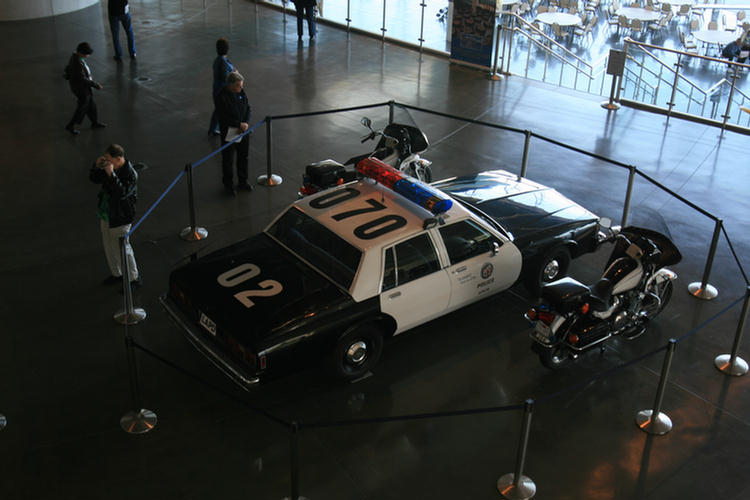
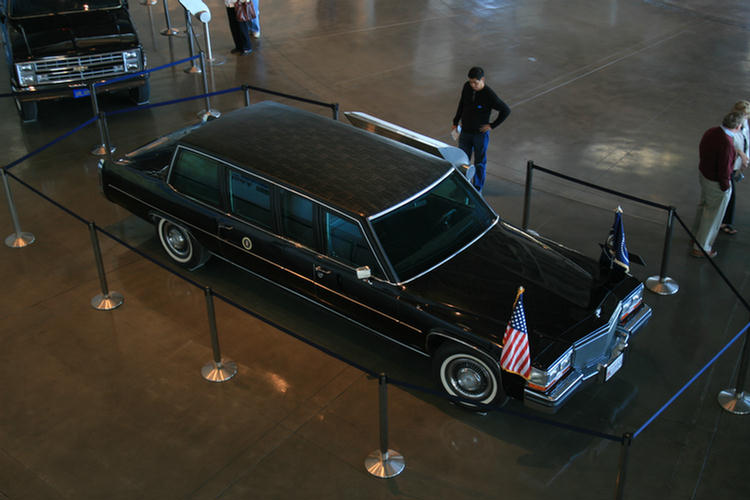
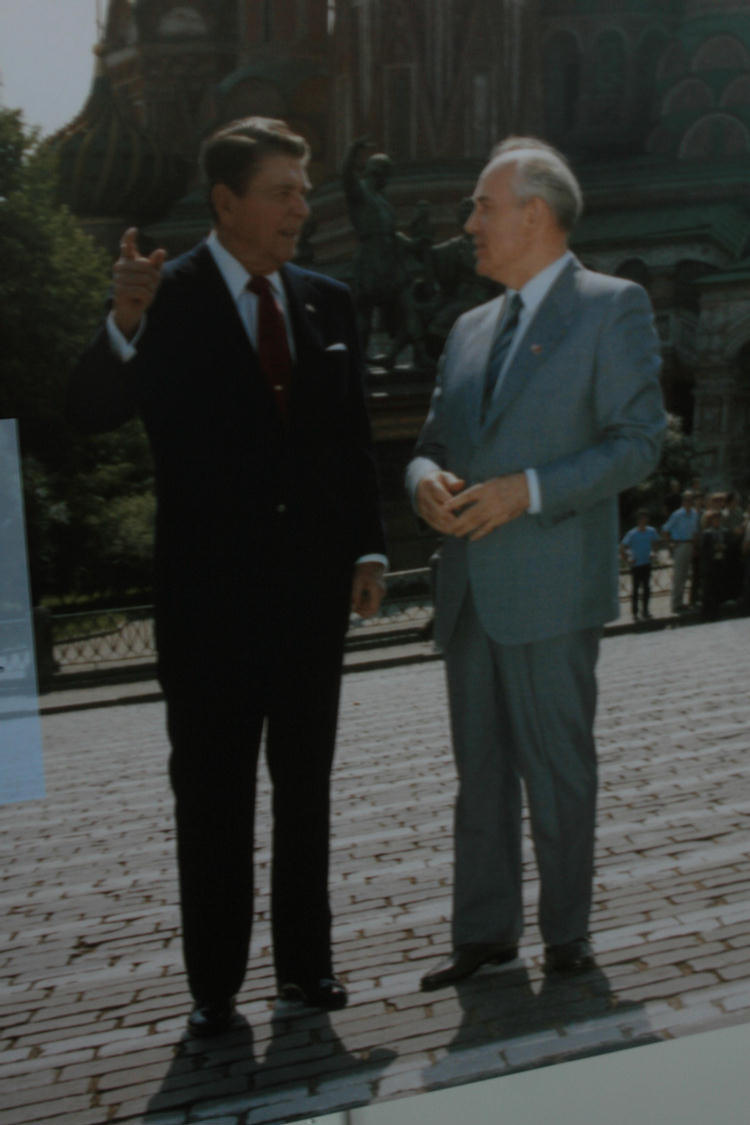
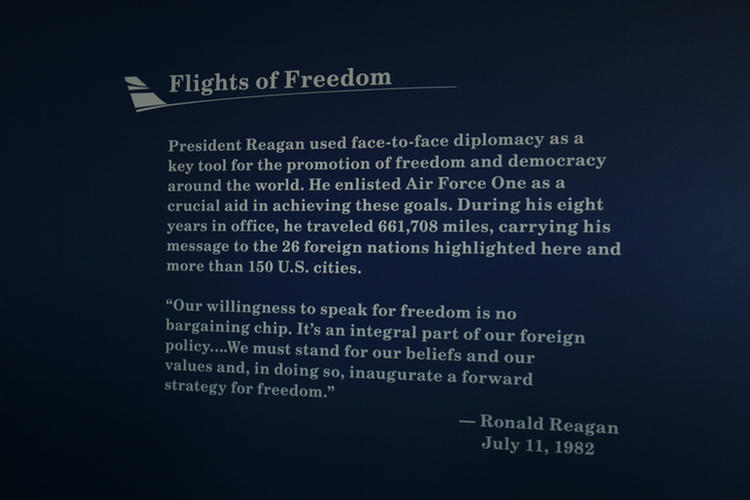

Did you know? - The presidential call sign was established for security purposes during the administration of Dwight D. Eisenhower. The change stemmed from a 1953 incident where an Eastern Airlines commercial flight (8610) had the same call sign as a flight the president was on (Air Force 8610). The aircraft accidentally entered the same airspace, and after the incident the unique call sign "Air Force One" was introduced for the presidential aircraft.
Eisenhower also introduced four other propeller aircraft, the Lockheed C-121 Constellations (VC-121E) to presidential service. These aircraft were named Columbine II and Columbine III by Mamie Eisenhower after the columbine, the official state flower of Colorado, her adopted home state. Two Aero Commanders were also added to the fleet and earned the distinction of being the smallest planes ever to serve as Air Force One. President Eisenhower also upgraded Air Force One's technology by adding an air-to-ground telephone and an air-to-ground teletype machine. Towards the end of Eisenhower's term in 1958, the Air Force added three Boeing 707 jets (as VC-137s designated SAM 970, 971, and 972), into the fleet.
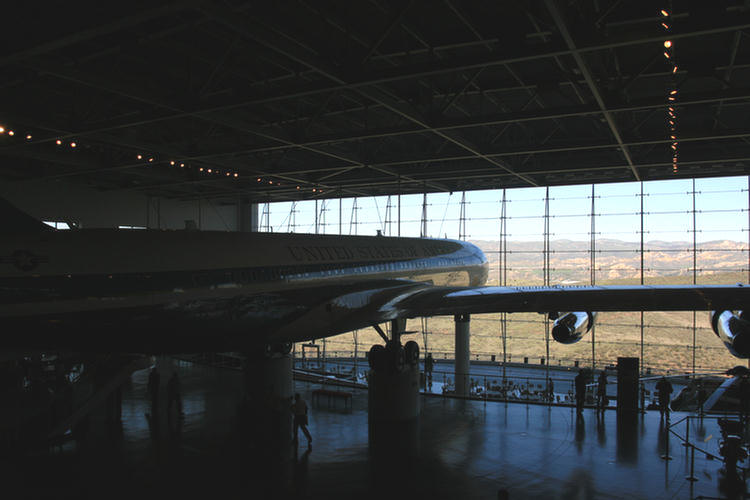
Did you know? - The Air Force had attempted a special presidential livery of their own design: a scheme in red and metallic gold, with the nation's name in block letters. Kennedy felt the aircraft appeared too regal, and, on advice from his wife, First Lady Jacqueline Kennedy, he contacted the French-born American industrial designer Raymond Loewy for help in designing a new livery and interiors for the VC-137 jet.
Loewy met with the president, and his earliest research on the project took him to the National Archives, where he looked at the first printed copy of the United States Declaration of Independence, and saw the country's name set widely spaced and in upper case in a typeface called Caslon. He chose to expose the polished aluminum fuselage on the bottom side, and used two blues; a slate-blue associated with the early republic and the presidency, and a more contemporary cyan to represent the present and future. The presidential seal was added to both sides of the fuselage near the nose, a large American flag was painted on the tail, and the sides of the aircraft read "United States of America" in all capital letters. Loewy's work won immediate praise from the president and the press.



